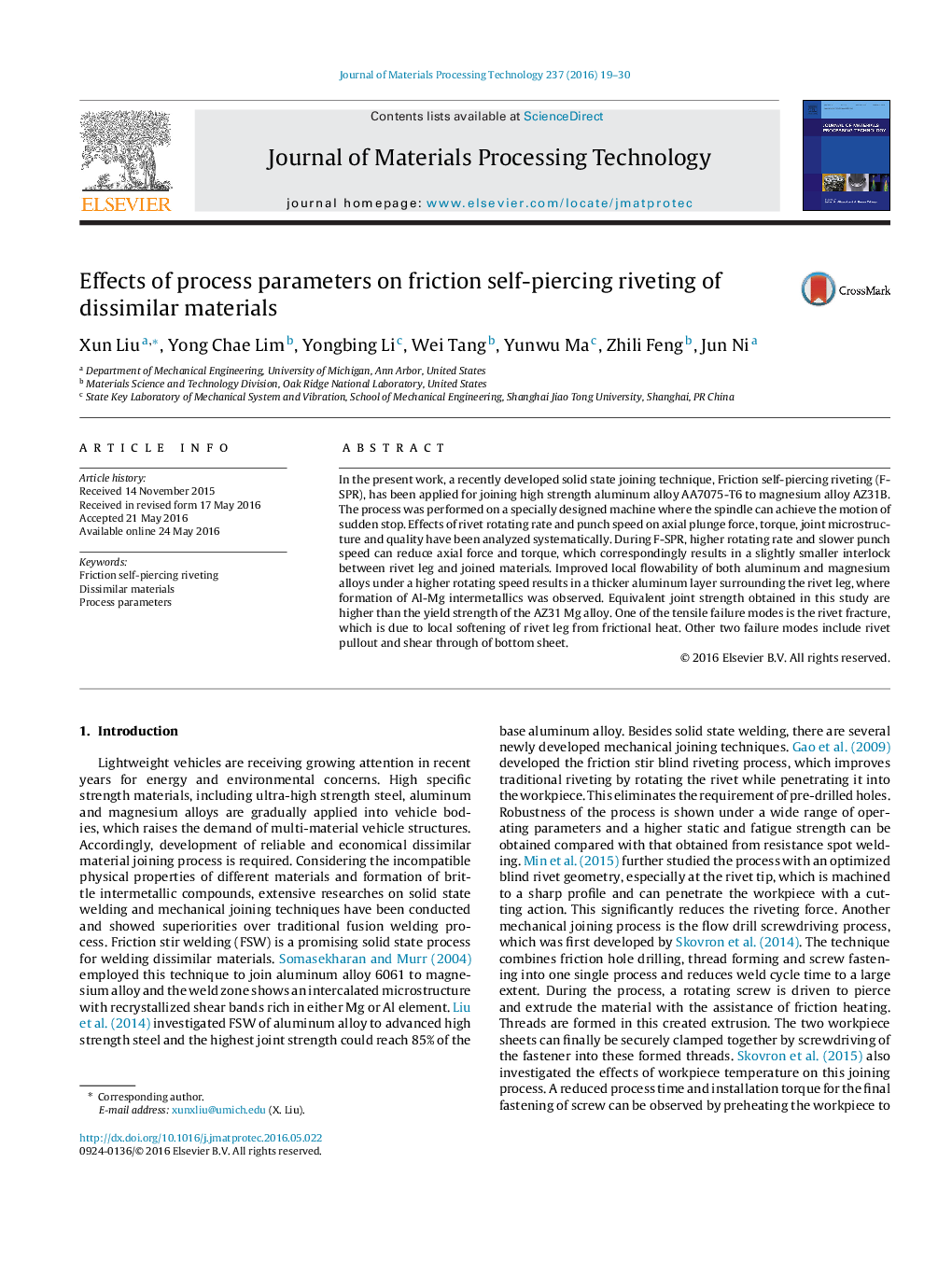| Article ID | Journal | Published Year | Pages | File Type |
|---|---|---|---|---|
| 795798 | Journal of Materials Processing Technology | 2016 | 12 Pages |
In the present work, a recently developed solid state joining technique, Friction self-piercing riveting (F-SPR), has been applied for joining high strength aluminum alloy AA7075-T6 to magnesium alloy AZ31B. The process was performed on a specially designed machine where the spindle can achieve the motion of sudden stop. Effects of rivet rotating rate and punch speed on axial plunge force, torque, joint microstructure and quality have been analyzed systematically. During F-SPR, higher rotating rate and slower punch speed can reduce axial force and torque, which correspondingly results in a slightly smaller interlock between rivet leg and joined materials. Improved local flowability of both aluminum and magnesium alloys under a higher rotating speed results in a thicker aluminum layer surrounding the rivet leg, where formation of Al-Mg intermetallics was observed. Equivalent joint strength obtained in this study are higher than the yield strength of the AZ31 Mg alloy. One of the tensile failure modes is the rivet fracture, which is due to local softening of rivet leg from frictional heat. Other two failure modes include rivet pullout and shear through of bottom sheet.
